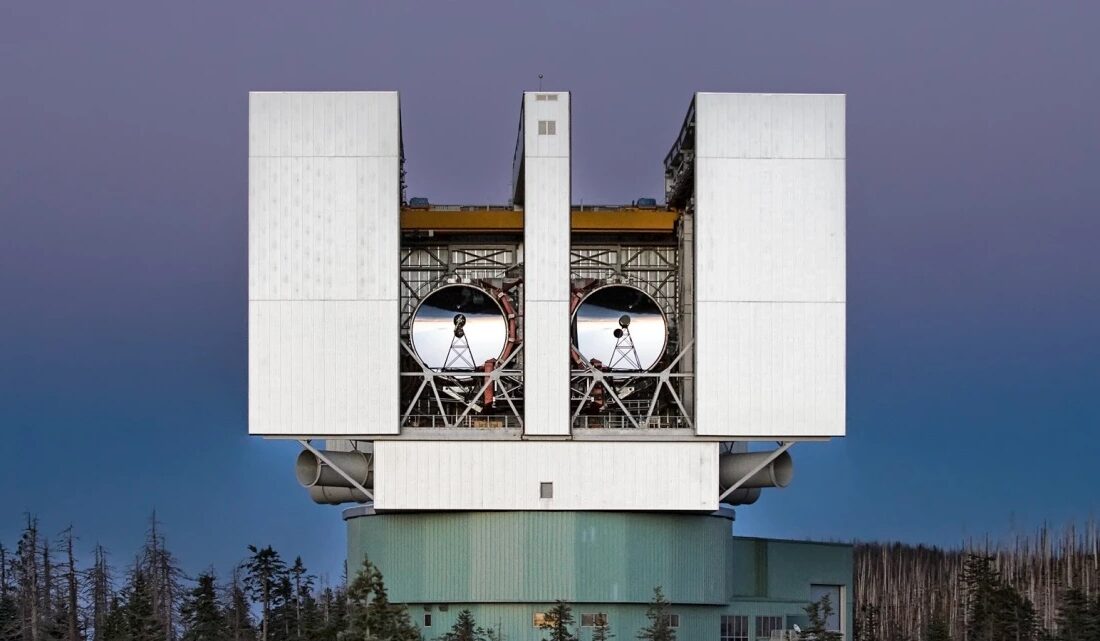Jacob Isbell Leads $1 Million NSF Project to Enhance Large Binocular Telescope
Breakthrough Instrument Development for Visible-Light Imaging
Tucson, AZ – Jacob Isbell, a postdoctoral researcher at the University of Arizona’s Department of Astronomy, has secured nearly $1 million in funding from the National Science Foundation (NSF) to spearhead the development of a groundbreaking optical instrument for the Large Binocular Telescope. This innovative project, known as the LBT Interferometer Visible Extension (LIVE), aims to significantly enhance the telescope’s capabilities in visible-light imaging, allowing scientists to explore the universe with unprecedented resolution.
A New Era of Astronomical Observation
“I’m thrilled about what the LIVE project makes possible,” Isbell stated. “LIVE is an international collaboration that will take proven techniques developed for the LBTI and extend them into the visible-light regime, opening up a new view of the universe.” This project is particularly noteworthy as it is rare for a postdoctoral scholar to receive such competitive federal research funding as a principal investigator, highlighting Isbell’s exceptional potential and the university’s commitment to nurturing early-career researchers.
Advancing Research Excellence and Educational Opportunities
The funding not only supports cutting-edge research but also aligns with the university’s strategic goals by fostering research excellence and creating experiential learning opportunities for both undergraduate and graduate students involved in the project. “Projects like LIVE help us confront some of the most profound questions in science—how stars live and die, how planets form, and where life might exist beyond Earth,” remarked Tomás Díaz de la Rubia, senior vice president for research and partnerships. “It’s this kind of bold, curiosity-driven research that positions U of A at the leading edge of discovery.”
Technical Innovations and Future Implications
Built on the foundation of LBT’s twin 8.4-meter mirrors, which function together as a single telescope with a 28.8-meter mirror through interferometry, LIVE will enable researchers to image fine structures in protoplanetary disks where planets are born. It will also facilitate the detection of changes on moons like Io and Europa, and map the dynamic environments surrounding supermassive black holes.
The instrument will be integrated into the LBT Interferometer, a strategic suite of instrumentation development and scientific inquiry led by co-Investigator Steve Ertel, an associate astronomer at Steward Observatory. With an extreme resolution capability of 4–5 milliarcseconds, LIVE is set to serve as a critical pathfinder for the nation’s forthcoming Extremely Large Telescopes.
A Collaborative Effort with Global Reach
"The LIVE award will provide important new capability at the Large Binocular Telescope and will result in exciting advances in our knowledge of the cosmos," said Joseph Shields, LBT Observatory director. "This initiative continues LBT’s tradition of discovery driven by innovation."
The project represents an international collaboration involving participants from Germany, Italy, and Mexico. It will also offer immersive, hands-on training in adaptive optics, interferometry, and optical engineering for undergraduate and graduate students. In alignment with the university’s land-grant mission, LIVE bridges foundational research with educational opportunities, preparing the next generation of scientists while ensuring that the benefits of discovery extend far beyond the laboratory.
This comprehensive initiative not only promises to revolutionize our understanding of the universe but also emphasizes the importance of education and collaboration in scientific advancement.


